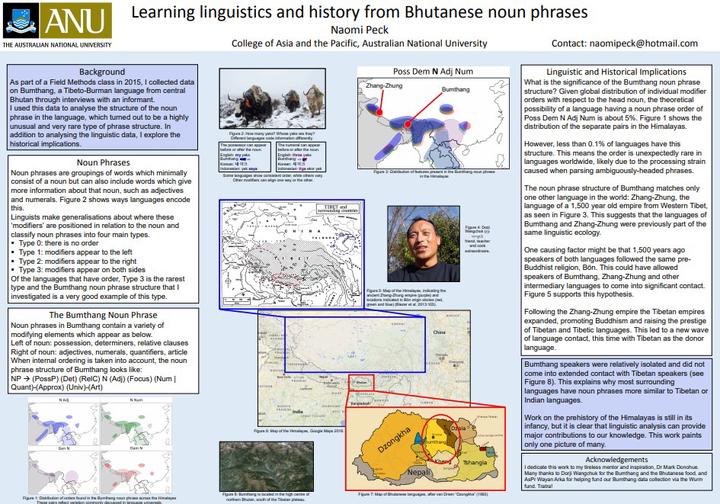
Abstract
Language is used universally by humans, yet each and every language differs in principled ways. The field of linguistic typology is centred on making sense of these differences, in order to form generalisations about how we use Language. One commonly-examined parameter of variation is word order. In particular, much research has been conducted on how different languages code the roles of subjects, verbs and objects at a sentence level. However, work into how languages order words at lower levels is often neglected. Noun phrases are groups of words centred on an obligatory noun which can be extended to include other types of words such as adjectives and numerals. These ‘modifiers’ will generally either precede the noun as in English and Japanese or follow it like in Indonesian and Arabic. More rarely, a language may position some modifiers before the noun, and others after it. Through data collected in a Field Methods class in 2015, I found that Bumthang, a language from central Bhutan, exhibits characteristics of this rare type with no single prevalent order. After comparing to other noun phrase structures worldwide, I discovered that Bumthang is similar to only one other language – Zhang-Zhung, an extinct language from a millennium-old Tibetan empire. This thus implies a previously unsuspected shared social and linguistic history between the two societies. The discovery of this rare structure will prove invaluable for linguistic typology and also help fill in the blanks of Himalayan and central Asian history.